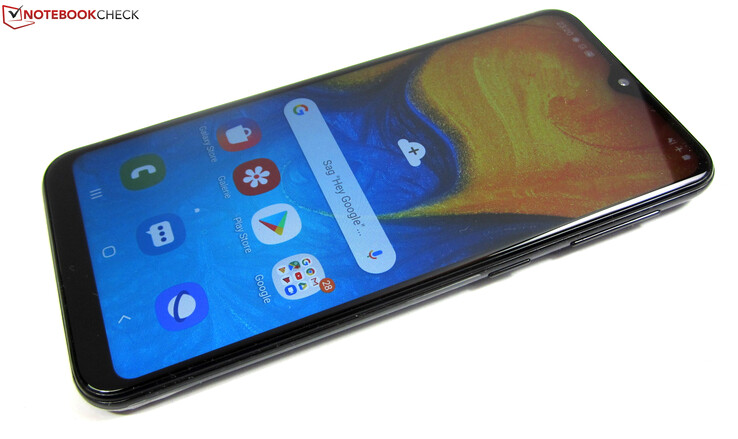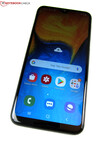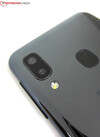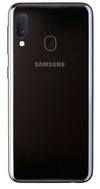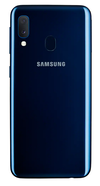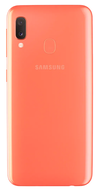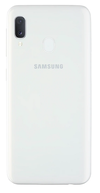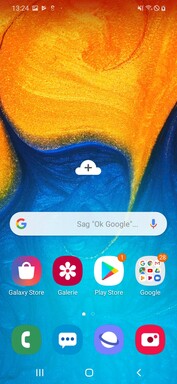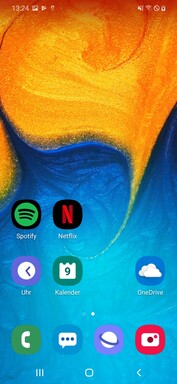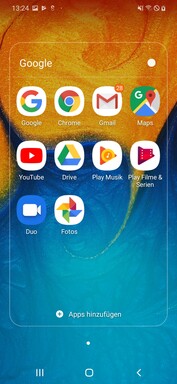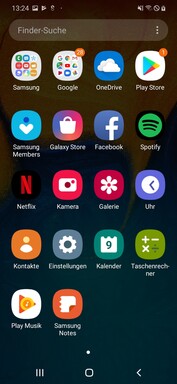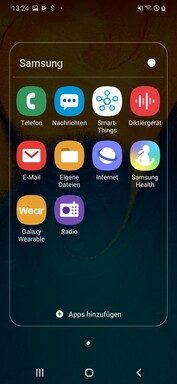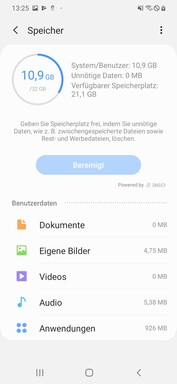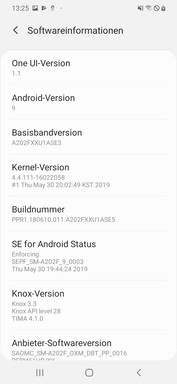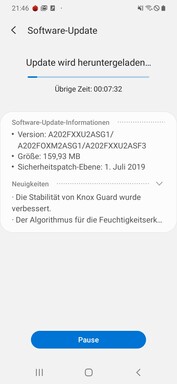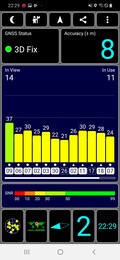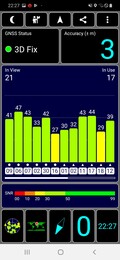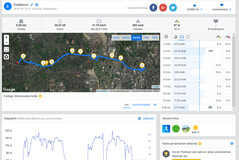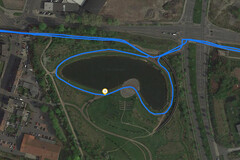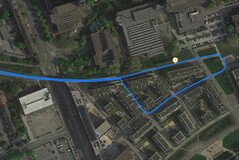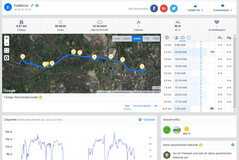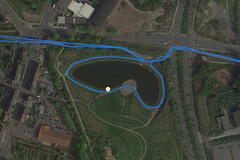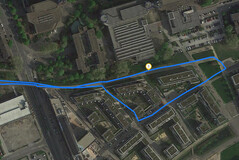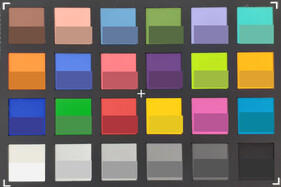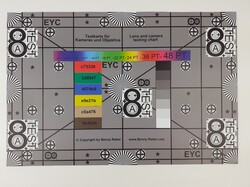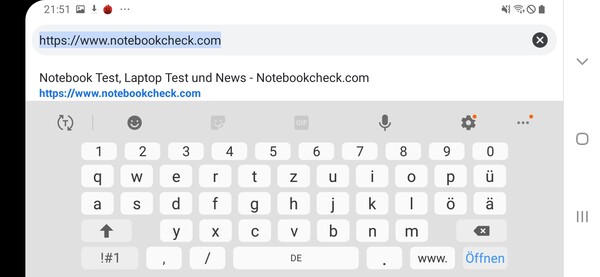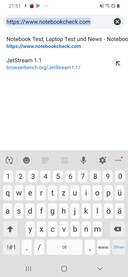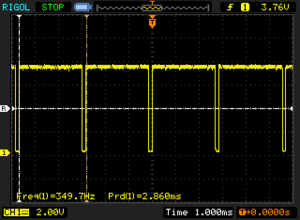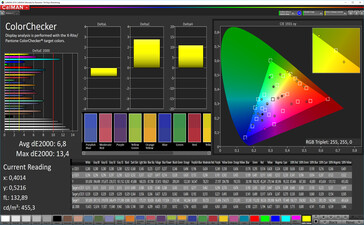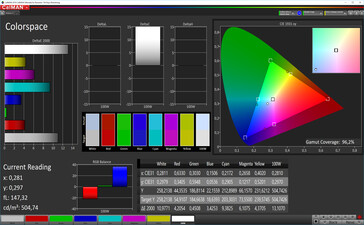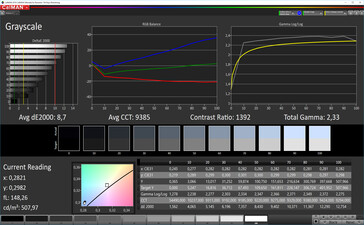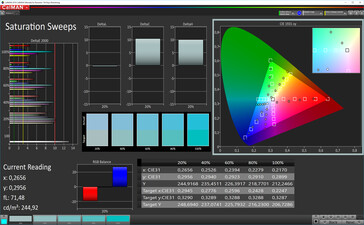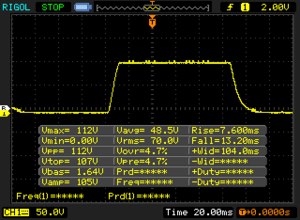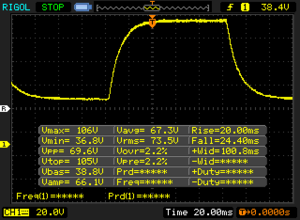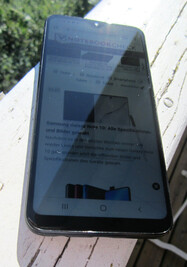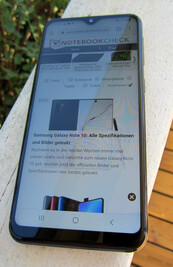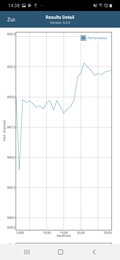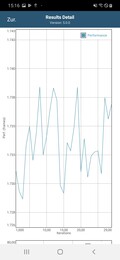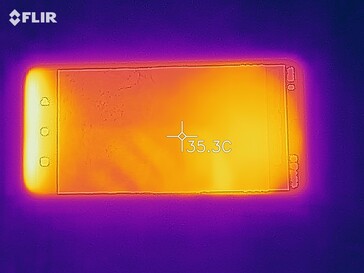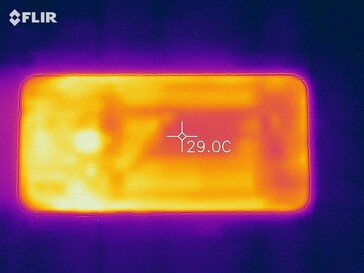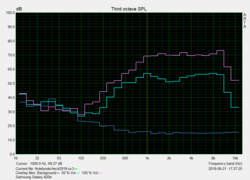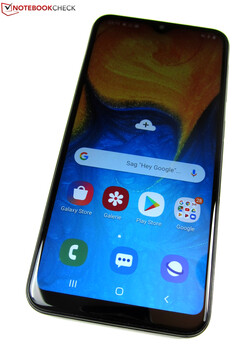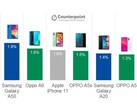Samsung Galaxy A20e Review: Top equipment at a budget price
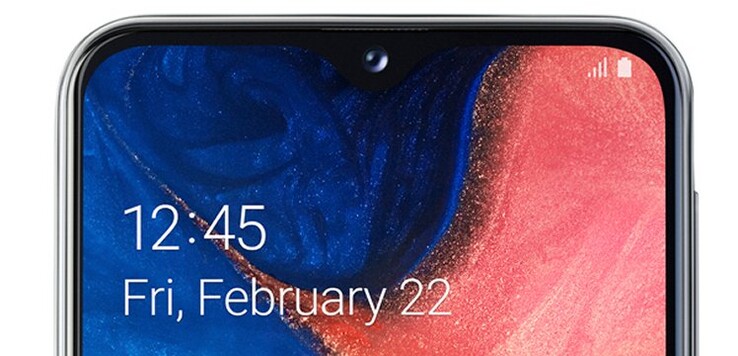
With the Galaxy A20e, the Galaxy-A series from Samsung receives an additional offspring. According to the manufacturer, the 5.8-inch entry-level smartphone was specifically developed for the needs of European customers, since compact smartphones are particularly valued here.
In the Galaxy A20e, "entry-level" does not mean that buyers will be offered a pared down equipment program. Actually, the features list is quite comprehensive, even though Samsung is officially only asking for 179 Euros (~$199) for its smartphone.
The Galaxy A20e is run by the Exynos 7884B octa-core SoC and 3 GB of RAM. In addition, there are 32 GB of internal storage, a 13-MP dual camera, an HD+ display with an IPS panel and a resolution of 1560x720 pixels, a 15-watt quick-charger, and the current Android 9.0 Pie.
In this review, we evaluate how the Samsung Galaxy A20e fares in the comparison with other current entry-level devices, i.e., smartphones with a similar form factor and price. Included in this comparison are the LG K40, the Motorola Moto G7 Play, the Nokia 4.2, the Sony Xperia L3, and the Xiaomi Redmi Note 7.
Case - A Samsung Galaxy weighing only 141 grams
Rounded edges and corners, small display bezels, and an elegant design: looking at its exterior, you would not guess that the Samsung Galaxy A20e is an entry-level smartphone with a 179-Euro (~$199) price label. When starting to handle the smartphone, this positive impression remains unchanged.
Due to its low weight of only 141 grams (~5 oz) and its slim 19.5:9 format, the Galaxy A20e feels good in the hand and has a high-quality feel. A concession at its price class: while the smooth back cover pretends to look like metal, it is only made from plastic, but still does not appear cheap. It is a fingerprint magnet, though.
Despite the poly-carbonate back, there is nothing creaking in the Galaxy A20e. In our test, it turns out very robust and remains to a large extent unaffected by our attempts to press it or warp it. Even with more pressure on the Gorilla-Glass-3-protected display, we can see at most some minimal brightening at the place we pressed.
The Galaxy A20e is available in the four colors Black, White, Blue, and Coral (see images).
Equipment - The Galaxy A20e with real dual SIM, NFC, and Bluetooth 5.0
Of the nominal 32 GB of Galaxy A20e storage, only slightly more than 21 GB are still available in a fresh installation. However, you can expand the internal storage via microSD card by up to 512 GB. In addition to media data, you can also move apps onto the storage card.
The additional equipment of the entry-level smartphone turned out fairly comprehensive. Together with the microSD card, you can also insert two Nano SIM cards into the Galaxy A20e. There are also features such as Bluetooth 5.0, NFC for wireless payments, and a 3.5-mm audio port. 3 GB of RAM and a USB-C port round up the equipment package. However, the USB port only transfers data at USB-2.0 speeds.
Software - Android 9.0 and One UI 1.1 for the Galaxy smartphone
The modern and newly designed Samsung One UI 1.1, which is based on Android 9, is running on the Galaxy A20e. Besides the visuals, there are only some small differences in the details compared to the standard Android, so users should find their way around very quickly. At the time of our testing (end of July), the Android security patches were updated to the level of July 1, 2019 – there is nothing more current than that.
Samsung has equipped the Galaxy A20e with a small selection of in-house apps such as Samsung Health, Galaxy Wearable, and the Galaxy Store. In addition, there are also third-party apps such as OneDrive, Facebook, Spotify, and Netflix, which cannot be uninstalled but only deactivated at best. However in the case of Netflix, this is not necessarily bad: because the Samsung Galaxy A20e supports DRM Widevine L1, it can also play video streams in HD resolution.
Communication and GPS - Fast and accurate locating outdoors
The Samsung Galaxy A20e can connect to the mobile net via GSM, UMTS, and LTE. However, it only covers the most necessary LTE frequency bands (band 1, 3, 5, 7, 8, 20, 38, and 40). When traveling abroad to non-European countries, you should therefore find out in advance whether the frequency bands that are used there are also supported by this smartphone.
In LTE networks, the Galaxy A20e can reach LTE Cat.4 speeds, which means that downloads are possible up to a maximum of 150 Mbps and uploads up to 50 Mbps. At short distances, the Galaxy A20e uses Bluetooth 5.0 and also supports NFC. In WLAN networks, the smartphone communicates via the 802.11 b/g/n standards and is thus limited to the 2.4-GHz frequency band.
When connected to our Linksys EA8500 reference router, the Galaxy A20e achieves stable data transfer rates, but at a maximum of 60 Mbps, it is relatively slow. When sending data, it is even limited to 39.7 Mbps. Yet, the Samsung is still able to place in the middle of the field of comparison devices, since the Motorola Moto G7 Play and the Nokia 4.2 are even worse. The Xiaomi Redmi Note 7 is unchallenged at the top spot, communicating in the WLAN almost six times as fast as the Galaxy A20e.
| Networking | |
| iperf3 transmit AX12 | |
| Xiaomi Redmi Note 7 | |
| Sony Xperia L3 | |
| Samsung Galaxy A20e | |
| LG K40 | |
| Nokia 4.2 | |
| Motorola Moto G7 Play | |
| iperf3 receive AX12 | |
| Xiaomi Redmi Note 7 | |
| LG K40 | |
| Sony Xperia L3 | |
| Samsung Galaxy A20e | |
| Nokia 4.2 | |
| Motorola Moto G7 Play | |
To determine its location, the Galaxy A20e uses the GPS, GLONASS, Beidou, and Galileo satellite systems. In our test indoors, it takes quite a while until the smartphone has collected sufficient information for this, and then our position is only accurate up to 8 meters (~26 feet). Outdoors, this works faster, and it is able to locate us with an accuracy of 3 meters (~10 feet) after a few seconds.
As usual, we evaluate on a bike tour how good the GPS capabilities of the smartphones are in real life, taking also the Garmin Edge 500 professional navigation device. As this practical test shows, the Galaxy A20e is able to keep up very well with the Garmin specialist device, determining its location just as accurately in practice. At least outdoors, it delivers accurate position information to the Samsung apps.
Telephone Functions and Voice Quality - VoLTE and VoWiFi in the Galaxy smartphone
With a dial pad, a call list, contacts, and the places nearby, the Telephone app developed by Samsung for One UI offers the same functionality as Google's standard app. The smartphone supports VoWiFi and VoLTE, as long as the network provider cooperates.
During calls, the Galaxy A20e transmits the voices in a good quality and also delivers an acceptable result in hands-free mode. Voices usually arrive on the other side without annoying additional noises. Only in some exceptional circumstances, we had to speak a little louder, otherwise our conversation partner could not hear us.
Cameras - A good dual camera and a weak selfie camera
An entry-level smartphone with a dual camera? Fortunately, the answer is "yes" in the case of the Galaxy A20e. The dual lenses are based on the Samsung S5K3L6 and consist of a 13-MP camera with an f/1.9 aperture and a 5 MP ultra-wide angle lens that is supposed to cover a viewing angle of 123°. The selfie camera, which is also equipped with the Samsung S5K3L6, has a resolution of 8 MP and an aperture of f/1.9.
The Galaxy A20e does not offer an optical or digital image stabilizer and neither does it offer an optical zoom. Instead, the main camera has a flash and auto-focus and is able to record HDR photos and videos in Full-HD resolution at up to 60 FPS. In addition, it supports Bokeh effects in the "Live Focus" mode, just as the selfie camera, that also offers some filter effects such as Live Stickers.
We really like the pictures taken with the main camera. During daylight, the dual camera takes dynamic and color saturated pictures that only lose some sharpness when you look closer at the details. We did not expect such an image quality from an entry-level smartphone. However, in weak light conditions, the camera has some trouble to reveal the details and produces some visible graininess.
We were disappointed by the selfie camera. Even under the best light conditions, its recordings appear pale and quite blurry. It is just barely acceptable for the occasional snapshot. Perhaps a software update by the manufacturer could bring some improvements.
Finally, we also take a detailed look at the camera under controlled light conditions. We are evaluating the color reproduction using the X-Rite ColorChecker Passport and the image sharpness using our test chart.
While the Galaxy A20 reproduces almost all the colors a tad too saturated, bright or dark gray tones, in particular, are reproduced fairly accurately. The smartphone is able to reproduce the test chart with fairly sharp details.
Accessories and warranty - A 15-watt quick-charger included
Samsung includes a modular 15-watt quick charger (9V/1.67A, 5V/2A), a USB cable (Type C to Type A), a SIM tool, a headset, quick-start instructions, and a leaflet with warranty instructions with the Galaxy A20e. Samsung also offers a wallet cover in the colors black and white (EF-WA202, 29.90 Euro, ~$33) especially for this smartphone.
The warranty for the Galaxy A20e is 24 months.
Input Devices and Operation - Samsung A20e with a fingerprint sensor and face recognition
The Galaxy A20e is operated using the Android keys on the display, which responds to input quickly. There are also some settings for gestures and movements. For example, you can activate a single-hand mode, keep the display turned on as long as you look at it, or use the fingerprint sensor to open or close the notification field.
In terms of security features, in addition to unlocking via pattern, PIN, or password, the Galaxy A20e also offers a fingerprint sensor on the back and face recognition via the selfie camera. The latter works fairly reliably, but the recognition rate is worse in the dark, due to the lack of an infrared sensor. However, the smartphone is able to counter this by increasing the display brightness temporarily.
The fingerprint sensor recognizes up to three fingerprints, which can be set up very quickly. In contrast to many other smartphones, it is sufficient to place your finger on the sensor once to register a fingerprint, rather than having to do this repeatedly. In our test, the recognition rate was still almost flawless.
Display - IPS instead of AMOLED
The 5.8-inch IPS display of the Galaxy A20e offers a resolution of 1560x720 pixels (HD+), which corresponds to a pixel density of 294 PPI. AMOLED displays can only be found in the Galaxy-A series starting in the mid-range models.
With its display brightness of 473.1 cd/m² on average, the Galaxy A20e is almost at the same level as the comparison devices. With an even distribution of light and dark image areas (APL50), the brightness increases to a maximum of 502 cd/m², and at 484 cd/m² hardly drops with the brightness sensor deactivated.
At a display brightness of less than 50%, there is PWM flickering in the Samsung smartphone. However, since its frequency is relatively high at 349.7 Hz, most users should not be disturbed by this.
| |||||||||||||||||||||||||
Brightness Distribution: 93 %
Center on Battery: 475 cd/m²
Contrast: 1357:1 (Black: 0.35 cd/m²)
ΔE ColorChecker Calman: 6.8 | ∀{0.5-29.43 Ø4.78}
ΔE Greyscale Calman: 8.7 | ∀{0.09-98 Ø5}
96.2% sRGB (Calman 2D)
Gamma: 2.33
CCT: 9385 K
| Samsung Galaxy A20e IPS, 1560x720, 5.8" | Xiaomi Redmi Note 7 IPS, 2340x1080, 6.3" | Nokia 4.2 IPS, 1520x720, 5.7" | LG K40 IPS, 1440x720, 5.7" | Sony Xperia L3 IPS, 1440x720, 5.7" | Motorola Moto G7 Play IPS, 1512x720, 5.7" | |
|---|---|---|---|---|---|---|
| Screen | 30% | 13% | 5% | 38% | 10% | |
| Brightness middle (cd/m²) | 475 | 541 14% | 445 -6% | 475 0% | 533 12% | 479 1% |
| Brightness (cd/m²) | 473 | 540 14% | 424 -10% | 467 -1% | 533 13% | 481 2% |
| Brightness Distribution (%) | 93 | 91 -2% | 91 -2% | 90 -3% | 89 -4% | 94 1% |
| Black Level * (cd/m²) | 0.35 | 0.33 6% | 0.26 26% | 0.32 9% | 0.25 29% | 0.37 -6% |
| Contrast (:1) | 1357 | 1639 21% | 1712 26% | 1484 9% | 2132 57% | 1295 -5% |
| Colorchecker dE 2000 * | 6.8 | 2.7 60% | 5.9 13% | 5.95 12% | 2.8 59% | 4.91 28% |
| Colorchecker dE 2000 max. * | 13.4 | 4.6 66% | 9.3 31% | 12.62 6% | 5.1 62% | 9.47 29% |
| Greyscale dE 2000 * | 8.7 | 3.1 64% | 6.8 22% | 7.9 9% | 1.9 78% | 6.4 26% |
| Gamma | 2.33 94% | 2.26 97% | 2.2 100% | 2.331 94% | 2.11 104% | 2.108 104% |
| CCT | 9385 69% | 6853 95% | 8443 77% | 8202 79% | 6149 106% | 7292 89% |
* ... smaller is better
Screen Flickering / PWM (Pulse-Width Modulation)
| Screen flickering / PWM detected | 349.7 Hz | ≤ 50 % brightness setting | |
The display backlight flickers at 349.7 Hz (worst case, e.g., utilizing PWM) Flickering detected at a brightness setting of 50 % and below. There should be no flickering or PWM above this brightness setting. The frequency of 349.7 Hz is relatively high, so most users sensitive to PWM should not notice any flickering. However, there are reports that some users are still sensitive to PWM at 500 Hz and above, so be aware. In comparison: 53 % of all tested devices do not use PWM to dim the display. If PWM was detected, an average of 8108 (minimum: 5 - maximum: 343500) Hz was measured. | |||
The Galaxy A20e scores with a very even brightness distribution of the display area (93%) and achieves a contrast ratio of 1357:1, which is very strong for an IPS panel.
However, as our measurements with the spectral photometer and the CalMAN software also show, the display has a significant blue tint, always reproducing the image contents with colors that are slightly too cool. In terms of the color accuracy, with Delta-E values of 6.8 and higher, it also remains clearly above the target (Delta-E < 3), so the color reproduction is not very realistic either. Since the display settings offer no options to adjust the colors, you cannot change anything about this.
Display Response Times
| ↔ Response Time Black to White | ||
|---|---|---|
| 20.8 ms ... rise ↗ and fall ↘ combined | ↗ 7.6 ms rise | |
| ↘ 13.2 ms fall | ||
| The screen shows good response rates in our tests, but may be too slow for competitive gamers. In comparison, all tested devices range from 0.1 (minimum) to 240 (maximum) ms. » 45 % of all devices are better. This means that the measured response time is similar to the average of all tested devices (20.2 ms). | ||
| ↔ Response Time 50% Grey to 80% Grey | ||
| 44.4 ms ... rise ↗ and fall ↘ combined | ↗ 20 ms rise | |
| ↘ 24.4 ms fall | ||
| The screen shows slow response rates in our tests and will be unsatisfactory for gamers. In comparison, all tested devices range from 0.165 (minimum) to 636 (maximum) ms. » 75 % of all devices are better. This means that the measured response time is worse than the average of all tested devices (31.6 ms). | ||
While using it outdoors, the Galaxy A20e does a good job. As long as you avoid direct sunlight, you can easily read the display contents. The stability of the viewing angles also offers no reason for complaint, and you can also read the display easily from steep viewing angles with the display appearing only slightly darker at most.
Performance - The Samsung Galaxy A20e with a new octa-core SoC
In the Samsung Galaxy A20e, the in-house Exynos 7884B SoC is used for the first time. The octa-core chip that was produced in the 14-nm manufacturing process is a slimmed down version of the Exynos 7885 and combines two Cortex A73 cores (1.56 GHz maximum) with six energy-efficient Cortex A53 cores that have a clock speed of up to 1.35 GHz. This is accompanied by the Mali-G71 MP2 ARM GPU and 3 GB of LPDDR4 RAM.
In the synthetic benchmarks, the Galaxy A20e makes the competitors sweat. You can hardly find another smartphone in the entry-level range that offers as much performance.
The LG K40 and the Nokia 4.2 are unable to compete against the Samsung smartphone. The only real competitor of the Galaxy A20e is the Motorola Moto G7 Play, which due to its Snapdragon 632 SoC is already part of the mid-range. Only the Xiaomi Redmi Note 7, which is considerably faster particularly in the CPU performance, is out of the league of our test candidate.
| PCMark for Android | |
| Work performance score (sort by value) | |
| Samsung Galaxy A20e | |
| Xiaomi Redmi Note 7 | |
| Nokia 4.2 | |
| LG K40 | |
| Sony Xperia L3 | |
| Motorola Moto G7 Play | |
| Average Samsung Exynos 7884B (6316 - 6902, n=3) | |
| Work 2.0 performance score (sort by value) | |
| Samsung Galaxy A20e | |
| Xiaomi Redmi Note 7 | |
| Nokia 4.2 | |
| LG K40 | |
| Sony Xperia L3 | |
| Motorola Moto G7 Play | |
| Average Samsung Exynos 7884B (5136 - 5309, n=3) | |
| AnTuTu v7 - Total Score (sort by value) | |
| Samsung Galaxy A20e | |
| Xiaomi Redmi Note 7 | |
| Nokia 4.2 | |
| LG K40 | |
| Sony Xperia L3 | |
| Motorola Moto G7 Play | |
| Average Samsung Exynos 7884B (89089 - 102121, n=3) | |
In the browser benchmarks, the sequence at the finish is similar to the synthetic benchmarks: After the Xiaomi Redmi Note 7, the Motorola Moto G7 Play is able to maintain its razor-thin advantage in second place ahead of the Galaxy A20e.
Subjectively, there is nothing to complain about the surfing speeds. The Samsung loads websites quickly and offers sufficient computing performance to also smoothly render complex HTML5 pages such as the online Ouigo Let's Play pinball game smoothly.
| Jetstream 2 - 2.0 Total Score | |
| Average of class Smartphone (23.8 - 387, n=149, last 2 years) | |
| Average Samsung Exynos 7884B (21.5 - 23.4, n=3) | |
| Samsung Galaxy A20e (Chrome 72.0.3626.121) | |
| Nokia 4.2 (Chrome 74) | |
| Sony Xperia L3 (Chrome 72) | |
| Speedometer 2.0 - Result 2.0 | |
| Average of class Smartphone (15.2 - 643, n=122, last 2 years) | |
| Samsung Galaxy A20e (Chrome 72.0.3626.121) | |
| Average Samsung Exynos 7884B (20.7 - 22.2, n=3) | |
| Nokia 4.2 (Chrome 74) | |
| Sony Xperia L3 (Chrome 72) | |
| WebXPRT 3 - Overall | |
| Average of class Smartphone (38 - 380, n=31, last 2 years) | |
| Xiaomi Redmi Note 7 (Chrome 72) | |
| Samsung Galaxy A20e (Chrome 72.0.3626.121) | |
| Average Samsung Exynos 7884B (45 - 48, n=3) | |
| Nokia 4.2 (Chrome 74) | |
| Sony Xperia L3 (Chrome 72) | |
| LG K40 (Chrome 74) | |
| Octane V2 - Total Score | |
| Average of class Smartphone (2228 - 121337, n=197, last 2 years) | |
| Xiaomi Redmi Note 7 (Chrome 72) | |
| Motorola Moto G7 Play | |
| Samsung Galaxy A20e (Chrome 72.0.3626.121) | |
| Average Samsung Exynos 7884B (6921 - 7470, n=3) | |
| Nokia 4.2 (Chrome 74) | |
| Sony Xperia L3 (Chrome 72) | |
| LG K40 (Chrome 74) | |
| Mozilla Kraken 1.1 - Total | |
| LG K40 (Chrome 74) | |
| Sony Xperia L3 (Chrome 72) | |
| Nokia 4.2 (Chrome 74) | |
| Average Samsung Exynos 7884B (5546 - 5917, n=3) | |
| Samsung Galaxy A20e (Chrome 72.0.3626.121) | |
| Motorola Moto G7 Play | |
| Xiaomi Redmi Note 7 (Chrome 72) | |
| Average of class Smartphone (257 - 28190, n=154, last 2 years) | |
* ... smaller is better
The 32 GB of eMMC flash storage of the Galaxy A20e achieves mostly good results in our benchmarks, which are comparable to those of the Xiaomi Redmi Note 7. However, both of these smartphones are a little weaker during the 4-KB random writes, causing the Motorola Moto G7 Play to be clearly ahead overall.
On the other hand, all perform at the same level in terms of reading and writing of microSD cards. Similar to the comparison devices, the Galaxy A20e achieves good transfer rates around 80 MB/s, which is no match for the capabilities of our Toshiba Exceria Pro M501 reference card (reading up to 270 MB/s, writing up to 150 MB/s), however.
| Samsung Galaxy A20e | Xiaomi Redmi Note 7 | Nokia 4.2 | LG K40 | Sony Xperia L3 | Motorola Moto G7 Play | Average 32 GB eMMC Flash | Average of class Smartphone | |
|---|---|---|---|---|---|---|---|---|
| AndroBench 3-5 | 19% | -41% | -15% | -10% | 76% | -4% | 1268% | |
| Sequential Read 256KB (MB/s) | 300.4 | 283.4 -6% | 220.4 -27% | 261.7 -13% | 290.9 -3% | 289 -4% | 242 ? -19% | 2228 ? 642% |
| Sequential Write 256KB (MB/s) | 103.6 | 204.7 98% | 18.17 -82% | 100.5 -3% | 87.5 -16% | 111 7% | 100.5 ? -3% | 1852 ? 1688% |
| Random Read 4KB (MB/s) | 79.8 | 82.9 4% | 17.51 -78% | 52.6 -34% | 28.83 -64% | 74 -7% | 43.1 ? -46% | 296 ? 271% |
| Random Write 4KB (MB/s) | 13.18 | 16.06 22% | 4.31 -67% | 10 -24% | 16.36 24% | 73 454% | 22.3 ? 69% | 339 ? 2472% |
| Sequential Read 256KB SDCard (MB/s) | 79.2 ? | 83.2 ? 5% | 86.7 ? 9% | 77.6 ? -2% | 80.9 ? 2% | 84.7 ? 7% | 71.8 ? -9% | |
| Sequential Write 256KB SDCard (MB/s) | 64.3 ? | 59.5 ? -7% | 65.9 ? 2% | 57.4 ? -11% | 61.7 ? -4% | 64.1 ? 0% | 52.9 ? -18% |
Games - Current games run on the Galaxy A20e with some limitations
While the Samsung Galaxy A20e's ARM Mali-G71 MP2 is only an entry-level GPU. to a large extent, its performance is still sufficient to play games smoothly.
Our test runs with the GameBench test app show how well the smartphone succeeds in this. "Dead Trigger 2," which is not that recent, runs at maximum details at an almost constant 60 FPS. However, the most current games, such as "Asphalt 9: Legends" can bring the Galaxy A20e to its limits. Also at maximum detail level, "Asphalt 9" plays at a still acceptable 25 FPS, which can appear as slightly stuttering, depending on the game section.
Emissions - No throttling in the Galaxy smartphone
Temperature
After one hour in our stress test, the case of the Galaxy A20e warms up to a maximum of 35.1 °C (~95 °F) and on average remains at only 33 °C (91 °F) in the front and back, so it always feels comfortable in the hand. During idle operation, the surface temperatures drop significantly below the 30 °C mark (86 °F).
As usual, with the GFXBench app, we evaluate whether the smartphone has to internally limit its SoC performance to get a handle on the heat development. The two test scenarios of the Manhattan and T-Rex tests show that this is not the case in the Galaxy A20e. Even after rendering the corresponding game scene for the 30th time, the frame rates remain as high as in the beginning.
(+) The maximum temperature on the upper side is 35.1 °C / 95 F, compared to the average of 35.2 °C / 95 F, ranging from 21.9 to 247 °C for the class Smartphone.
(+) The bottom heats up to a maximum of 34.3 °C / 94 F, compared to the average of 34 °C / 93 F
(+) In idle usage, the average temperature for the upper side is 28.7 °C / 84 F, compared to the device average of 32.9 °C / 91 F.
Speaker
The speaker of the Galaxy A20e is positioned at the bottom edge, next to the USB-C port. While as expected, it does not produce a high-end sound, the sound is fairly balanced with well-pronounced mids and is not distorted even at maximum volume.
Via the 3.5-mm audio port, you can also connect headphones or speakers to the Galaxy A20e. Audio streaming via Bluetooth 5.0 with aptX support is also possible.
Samsung Galaxy A20e audio analysis
(±) | speaker loudness is average but good (81.6 dB)
Bass 100 - 315 Hz
(-) | nearly no bass - on average 27.1% lower than median
(±) | linearity of bass is average (9.4% delta to prev. frequency)
Mids 400 - 2000 Hz
(±) | reduced mids - on average 5.8% lower than median
(+) | mids are linear (5.4% delta to prev. frequency)
Highs 2 - 16 kHz
(±) | higher highs - on average 5.7% higher than median
(+) | highs are linear (2.5% delta to prev. frequency)
Overall 100 - 16.000 Hz
(±) | linearity of overall sound is average (24% difference to median)
Compared to same class
» 55% of all tested devices in this class were better, 8% similar, 37% worse
» The best had a delta of 11%, average was 35%, worst was 134%
Compared to all devices tested
» 71% of all tested devices were better, 6% similar, 22% worse
» The best had a delta of 4%, average was 24%, worst was 134%
Xiaomi Redmi Note 7 audio analysis
(+) | speakers can play relatively loud (87.6 dB)
Bass 100 - 315 Hz
(-) | nearly no bass - on average 27.6% lower than median
(±) | linearity of bass is average (12% delta to prev. frequency)
Mids 400 - 2000 Hz
(+) | balanced mids - only 4.1% away from median
(+) | mids are linear (4.5% delta to prev. frequency)
Highs 2 - 16 kHz
(±) | higher highs - on average 5% higher than median
(+) | highs are linear (4.9% delta to prev. frequency)
Overall 100 - 16.000 Hz
(±) | linearity of overall sound is average (19.3% difference to median)
Compared to same class
» 26% of all tested devices in this class were better, 9% similar, 65% worse
» The best had a delta of 11%, average was 35%, worst was 134%
Compared to all devices tested
» 46% of all tested devices were better, 8% similar, 47% worse
» The best had a delta of 4%, average was 24%, worst was 134%
Battery Life - A solid average
Power Consumption
With an average power consumption of 1.63 watts during idle operation and 2.77 watts under load, the Galaxy A20e presents itself as one of the most efficient smartphones among the comparison devices. It is only barely surpassed by the Sony Xperia L3.
The Galaxy A20e combines its low power consumption with fast charging. The included 15-watt charger (9V/1.67A, 5V/2A) is able to completely recharge the 3000-mAh battery within 1:35 hours.
| Off / Standby | |
| Idle | |
| Load |
|
Key:
min: | |
| Samsung Galaxy A20e 3000 mAh | Xiaomi Redmi Note 7 4000 mAh | Nokia 4.2 3000 mAh | LG K40 3000 mAh | Sony Xperia L3 3300 mAh | Motorola Moto G7 Play 3000 mAh | Average Samsung Exynos 7884B | Average of class Smartphone | |
|---|---|---|---|---|---|---|---|---|
| Power Consumption | -50% | -17% | -15% | 1% | -48% | -14% | -75% | |
| Idle Minimum * (Watt) | 0.66 | 0.61 8% | 0.74 -12% | 0.68 -3% | 0.57 14% | 1 -52% | 0.67 ? -2% | 0.842 ? -28% |
| Idle Average * (Watt) | 1.63 | 1.95 -20% | 1.9 -17% | 1.53 6% | 1.5 8% | 1.7 -4% | 1.617 ? 1% | 1.439 ? 12% |
| Idle Maximum * (Watt) | 1.67 | 2.03 -22% | 2.21 -32% | 1.95 -17% | 1.51 10% | 2.6 -56% | 1.777 ? -6% | 1.624 ? 3% |
| Load Average * (Watt) | 2.77 | 4.56 -65% | 3.04 -10% | 3.5 -26% | 3.09 -12% | 4.1 -48% | 3.73 ? -35% | 7.03 ? -154% |
| Load Maximum * (Watt) | 3.66 | 9.15 -150% | 4.15 -13% | 4.9 -34% | 4.15 -13% | 6.5 -78% | 4.67 ? -28% | 11.3 ? -209% |
* ... smaller is better
Battery Life
For a 3000-mAh battery, the runtimes of the Galaxy A20e are fairly good. However, this also means in practice that the smartphone needs more power after about a day of constant usage.
Compared to other smartphones, it does not run much longer, but achieves about the same battery life. In the WLAN test, the Samsung Galaxy A20e ran for a decent 11:55 hours, and when playing an H.264 video, it lasted 12:33 hours. Only the Xiaomi Redmi Note 7 was noticeably better in the comparison, since it is able to use the advantage of its larger battery.
| Samsung Galaxy A20e 3000 mAh | Xiaomi Redmi Note 7 4000 mAh | Nokia 4.2 3000 mAh | LG K40 3000 mAh | Sony Xperia L3 3300 mAh | Motorola Moto G7 Play 3000 mAh | |
|---|---|---|---|---|---|---|
| Battery runtime | 18% | -3% | 4% | 8% | -3% | |
| Reader / Idle (h) | 23.9 | 32.5 36% | 35.5 49% | |||
| H.264 (h) | 12.6 | 15.7 25% | 12.5 -1% | |||
| WiFi v1.3 (h) | 11.9 | 12.8 8% | 11.6 -3% | 12.4 4% | 10.7 -10% | 11.5 -3% |
| Load (h) | 4.2 | 4.3 2% | 4 -5% |
Pros
Cons
Verdict - A lot of smartphone for little money
Those who have only planned for a small budget for their new smartphone will get a lot of value for their money with the Samsung Galaxy A20e. Of course, the case is plain plastic and you have to like the small form factor. However, if you still decide for the 141-gram lightweight, you will be rewarded with comprehensive equipment and fast performance.
A well-rounded deal: The Samsung Galaxy A20e, which officially costs 179 Euros (~$199), offers surprisingly comprehensive equipment and rewards buyers with pleasant workmanship and haptics.
With its Exynos 7884B octa-core SoC and 3 GB of RAM, the Galaxy A20e offers sufficient performance for using everyday apps such as YouTube and Whatsapp. In terms of its communication technology, it is well-equipped with dual SIM, VoLTE, VoWiFi, NFC, and Bluetooth 5.0 including aptX support. However, it does not support a large amount of LTE bands, but the frequency coverage is completely sufficient for using it in Europe.
A nice extra feature is the support of DRM Widevine L1, allowing the Galaxy A20e to also stream HD videos from streaming providers such as Netflix. Other advantages are a dual camera that shoots good pictures during daylight, and the included quick charger that can completely recharge the battery within 1.5 hours.
On the other hand, you have to make do with slow WLAN speeds in the Galaxy A20e, and also a selfie camera that can only deliver snapshot quality at best. Samsung also uses only an IPS display in the affordable entry-level device. While it does a good job, it is inferior to the technology of the AMOLED panels in the more expensive Galaxy-A models.
Samsung Galaxy A20e
- 10/31/2019 v7 (old)
Manuel Masiero




